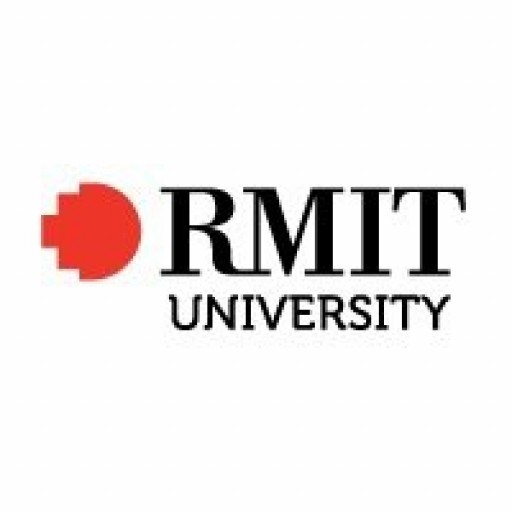Photos of university / #qutrealworld
The Bachelor of Design (Architecture) at Queensland University of Technology offers students a comprehensive and innovative education in the field of architectural design and thinking. As a leading program in Australia, it is dedicated to fostering creativity, technical proficiency, and a deep understanding of the social and environmental contexts that influence built environments. Throughout the course, students engage in a wide range of design projects that challenge them to develop sustainable, functional, and aesthetically compelling architectural solutions. The curriculum combines theoretical background with practical skills, ensuring graduates are well-equipped to meet the evolving demands of the architecture profession. Students gain hands-on experience through studio-based learning, where they collaborate with peers and industry partners on real-world projects, preparing them for professional practice. The program emphasizes critical thinking, innovation, and research, encouraging students to explore contemporary issues such as urbanization, climate change, and community design. State-of-the-art facilities and access to industry networks provide students with valuable opportunities for internships, workshops, and industry engagement. Graduates of the Bachelor of Design (Architecture) are prepared for careers in architecture, urban design, and other related fields, with a strong foundation for further postgraduate studies or direct entry into professional practice. The program is designed to nurture creative and ethical architects who can contribute meaningfully to society through thoughtful, sustainable, and innovative design solutions.
This course, along with the next Master of Architecture course, has received full accreditation from the Architects Accreditation Council of Australia, and full Comprehension from the Australian Institute of Architects. Graduates qualify for membership of the Design Institute of Australia (DIA), the professional body for Australian designers.
- Year 12 or equivalent
- Assumed knowledge: English, or Literature, or English and Literature, or English as Another Language (Units 4 & 3, C).
The Bachelor of Design (Architecture) at Queensland University of Technology offers a range of financing options to support students throughout their academic journey. Domestic students typically have access to government financial assistance programs such as the Commonwealth Supported Place (CSP), which significantly reduces the tuition fees, making higher education more affordable. These students may also be eligible for scholarships focused on design and architecture, which are awarded based on academic achievement, talent, or financial need. Queensland University of Technology provides various scholarships, grants, and bursaries, some of which are specifically aimed at students enrolled in design-related courses.
International students, on the other hand, are responsible for paying full tuition fees, which vary depending on the year of study and program specifics. To assist with these costs, students can explore external funding sources, including international scholarships, sponsorships, and education loans available in their home countries or through international financial institutions. The university also offers payment plans that allow students to spread their tuition fees over several installments, easing the immediate financial burden.
Students enrolled in the program are encouraged to consider part-time employment opportunities both on and off-campus to supplement their income. Queensland University of Technology's location in Brisbane provides students access to a vibrant job market with opportunities in creative industries, architecture firms, design studios, and related sectors. Additionally, some students may be eligible for government loans or financial aid schemes from their home countries, especially if they are international students from nations with bilateral agreements.
Financial planning is a crucial aspect of undertaking studies in architecture and design, given the potential additional costs associated with studio materials, software, and field trips. The university's financial advisory services offer guidance to help students understand their options, budget their expenses, and plan effectively for their studies. Overall, a combination of government support, scholarships, personal savings, employment, and possibly family assistance can help students finance their education in the Bachelor of Design (Architecture) program at Queensland University of Technology.
The Bachelor of Design (Architecture) at Queensland University of Technology (QUT) is a comprehensive program aimed at developing students' skills and knowledge in architectural design, theory, technology, and practice. This degree is designed to prepare graduates for professional careers in architecture by combining creative design processes with a solid understanding of technical and environmental considerations. The curriculum emphasizes sustainable design, innovative problem-solving, and engaging with the social and cultural contexts of architecture. Students are encouraged to explore a variety of design methodologies and to develop a critical understanding of the impact of architecture on communities and the environment. The program includes a mix of lectures, studio projects, and practical workshops, providing hands-on experience in architectural drawing, model-making, computer-aided design (CAD), Building Information Modeling (BIM), and other relevant digital tools. Students also undertake internships and industry placements to gain real-world experience and build professional networks. The degree promotes a collaborative learning environment where students work closely with peers, faculty, and industry professionals. Upon graduation, students are equipped to pursue registration as architects and to engage in diverse roles within the built environment sector, including urban design, interior architecture, and landscape architecture. The program adheres to current national and international standards for architectural education and aims to foster innovative, ethical, and sustainable design practices.




